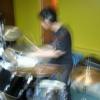The image that is the map tiles is approximately 11,000 pixels wide. When I load it into SDL_Texture with software rendering, it works. When I use this, however, it does not:
screen=SDL_CreateRenderer(window, -1, SDL_RENDERER_ACCELERATED | SDL_RENDERER_PRESENTVSYNC | SDL_RENDERER_SOFTWARE );
Thanks!







